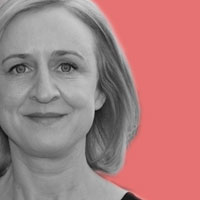


This article assesses the evidence on how students with special educational needs (SEN) compare with their peers across a range of dimensions. It then considers the new special-education funding arrangements as a policy lever to potentially address the gaps between SEN and non-SEN students.
The Growing Up in Ireland (GUI) study has been groundbreaking in terms of the data it gathers on students with special education needs (SEN). Research based on GUI has been central in highlighting that inclusive policies and programmes don’t always mean true inclusion for these students. This article assesses the evidence on how students with SEN compare with their peers across a range of dimensions. It then considers the new special-education funding arrangements as a policy lever to potentially address the gaps between SEN and non-SEN students.
GUI identified 21% of students as having one of four main disability types: general learning, specific learning, emotional/behavioural, and physical/sensory. Boys, children from disadvantaged backgrounds, and children attending disadvantaged schools were more likely to be identified as having an SEN (McCoy, Banks, and Shevlin, 2012, 2016). The disproportionate prevalence of SEN among disadvantaged students has prompted concerns about over-identification of emotional and behavioural conditions and under-identification of learning disabilities (Banks et al., 2012; McCoy, Banks, and Shevlin, 2016).
Diagnosis is not always a reflection of student needs, which are often heterogeneous and shifting among SEN students with similar diagnoses. These findings prompted calls to change the funding for special education, which was recently revised (Banks et al., 2015; NCSE, 2014), an issue we return to later.
GUI data shows that across multiple dimensions, students with SEN were more likely to face difficulties than non-SEN students. SEN students were less likely to like school and more likely to find it difficult, they had different interactions with peers and teachers, and they were more likely to have a difficult transition into second-level education. Key differences were also identified between the parents of SEN students and those of non-SEN students.
Evidence shows that, in mainstream settings, students with SEN like school less than their peers without SEN. This pattern widens between primary and second-level school. Students with SEN are also more likely to find all school subjects more difficult. The differences were less pronounced in Science and most pronounced in Irish. The academic self-image of SEN students was less positive than non-SEN peers, and the gap between the two groups grew over time. While 27% of non-SEN students reported an above-average academic self-image, the equivalent figure for SEN students was only 13%, indicating lower self-confidence among this group (Williams et al., 2018). In part, this gap is explained by differences in parental expectations.
At age thirteen, SEN students were likely to have fewer close friends than both Irish non-SEN and immigrant students. They were also more likely to miss their primary-school friends and to experience anxiety about making new friends (Smyth, 2017). In fact, SEN students were twice as likely to be bullied than students without SEN (Cosgrove et al., 2018). These findings are not unique to Ireland, and research more widely shows that the number of contacts and friendships does not spontaneously increase when children with SEN attend mainstream schools (Pijl and Hamstra, 2005). Further evidence from GUI found that while teachers reprimanded SEN students to a similar extent as non-SEN students, they were less likely to praise SEN students (Williams et al., 2018).
New research is examining how students with SEN fare at key transition points in their education. Progressing from primary to second-level, students with SEN were far more likely to experience a negative transition than those without SEN. The transition measure captures multiple dimensions, including emotional, social, peer, and academic adjustment. Students with specific learning disabilities and general learning disabilities were at greater risk (McCoy et al., 2019). The findings align with earlier research highlighting the challenges for students in progressing in an academic environment. Challenges include the change in pace, breadth, and complexity of schoolwork and increased demands in terms of academic progress, including the ability to learn independently (Makin et al., 2017).
Parents of SEN students typically are highly engaged in their children’s education. More than twice as many parents of SEN students (44%) have attended talks or meetings with teachers or the principal than parents of non-SEN students (18%), a pattern not explained by levels of misbehaviour. They were also more likely to be involved in their children’s homework, partly reflecting the greater academic needs of some of these students. Yet parents of SEN students were also found to have lower academic expectations of their children. Parental expectations were found to be significant in shaping academic skills at age thirteen and changes in academic skills between nine and thirteen years. The role of parental expectations in inhibiting students from maximising their potential is likely to stem from how parents view the opportunities their children have for further and higher education. This highlights the need to promote equality of opportunity at all educational levels and the importance of information and guidance for all students and their parents on the full range of post-school education and training options available (McCoy, Maître, et al., 2016).
Evidence on the gaps between SEN and non-SEN students and on some of the factors that contribute to these gaps has not gone unanswered. In September 2017, a new Special Education Teaching Allocation was introduced, providing a unified allocation for special educational teaching needs to each primary and secondary school, based on that school’s educational profile (Cosgrove et al., 2018). The previous funding model distributed money based on diagnosed SEN, with pre-assigned resources by disability type and regardless of student and institutional need. The new model gives schools more autonomy in how to manage and deploy special education teaching support, based on students’ individual learning needs rather than primarily on a diagnosis of disability.
Evidence from Growing Up in Ireland has consistently highlighted the role of school context and composition in shaping the identification of different types of SEN, the adequacy of supports for these students, and the experiences of students in different school contexts. It is to be welcomed that the new funding scheme is attempting to address these challenges (McCoy et al., 2019) and provides more resources to schools that most need them (DES, 2019). Additional curricular and assessment reforms, particularly at junior cycle level, are also likely to positively influence the educational experiences of SEN students.
Schools and parents have made substantial efforts to facilitate the integration of SEN students in mainstream schools, and their efforts should be recognised. However, the challenges faced by SEN students are systemic and span all societal settings, not just schools. Recent reforms may not be enough to directly address some of the gaps between SEN and non-SEN students and their outcomes. Additional interventions in schools and beyond may be required to address the academic and relational barriers evidenced from GUI.
Banks, J., Shevlin, M., and McCoy, S. (2012) ‘Disproportionality in special education: Identifying children with emotional behavioural difficulties in Irish primary schools’, European Journal of Special Needs Education, 27(2), 219–35.
Banks, J., Frawley, D., and McCoy, S. (2015) ‘Achieving inclusion? Effective resourcing of students with special educational needs’, International Journal of Inclusive Education, 19(9), 926–43.
Cosgrove, J., McKeown, C., Travers, J., Lysaght, Z., Ni Bhroin, Ó., and Archer, P. (2018) Educational experiences and outcomes of children with special educational needs: Phase 2 – from age 9 to 13. National Council for Special Education.
http://ncse.ie/wp-content/uploads/2018/03/03263-NCSE-EdExps-Children-SEN-FINAL-UPLOAD.pdf.
Department of Education and Skills (DES) (2019) Circular to the management authorities of all post-primary schools: Secondary, community and comprehensive schools and the chief executive officers of the education and training boards.
www.education.ie/en/Circulars-and-Forms/Active-Circulars/cl0008_2019.pdf.
Makin, C., Hill, V., and Pellicano, E. (2017) ‘The primary to secondary school transition for children on the autism spectrum: A multi-informant mixed-methods study’, Autism and Developmental Language Impairments, 2, 1–18.
McCoy, S., Banks, J., and Shevlin, M. (2012) ‘School matters: How context influences the identification of different types of special educational needs’, Irish Educational Studies, 31(2), 119–38.
McCoy, S., Banks, J., and Shevlin, M. (2016) ‘Insights into the prevalence of special educational needs’. In: J. Williams, E. Nixon, E. Smyth, and D. Watson (eds.) Cherishing All the Children Equally? Ireland 100 Years on from the Easter Rising.
www.esri.ie/system/files/media/file-uploads/2016-10/CB201608.pdf.
McCoy, S., Maître, B., Watson, D., and Banks, J. (2016) ‘The role of parental expectations in understanding social and academic well-being among children with disabilities in Ireland’, European Journal of Special Needs Education, 31(4), 535–52.
McCoy, S., Shevlin, M., and Rose, R. (2019) ‘Secondary school transition for students with special educational needs in Ireland’, European Journal of Special Needs Education. doi: 10.1080/08856257.2019.1628338
National Council for Special Education (NCSE) (2014) ‘Delivery for students with special educational needs: A better and more equitable way. A proposed new model for allocating teaching resources for students with special educational needs.’
https://ncse.ie/wp-content/uploads/2014/09/Allocating_resources_1_5_14_Web_accessible_version_FINAL.pdf.
Pijl, S.J. and Hamstra, D. (2005) ‘Assessing pupil development and education in an inclusive setting’, International Journal of Inclusive Education, 9, 181–92.
Smyth, E. (2017) ‘Off to a good start? Primary school experiences and the transition to second-level education’. Dublin: Growing Up in Ireland.
www.growingup.ie/pubs/Off-to-a-Good-Start-Report.pdf.
Williams, J., Thornton, M., Morgan, M., Quail, A., Smyth, E., Murphy, D., and O’Mahony, D. (2018) ‘The lives of 13-year-olds’. Dublin: Growing Up in Ireland.
www.growingup.ie/pubs/Lives-of-13-Year-olds-report.pdf.
Copyright © Education Matters ® | Website Design by Artvaark Design